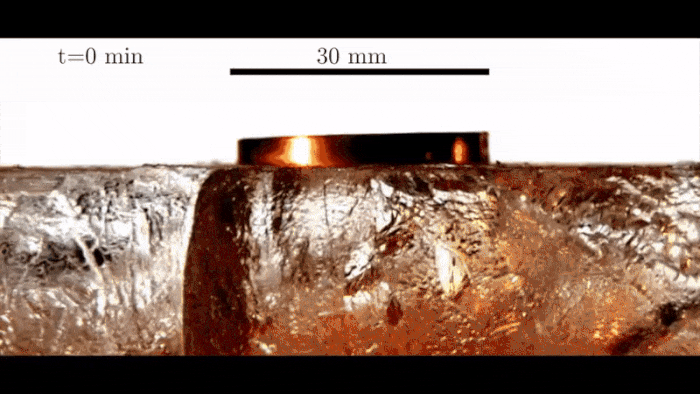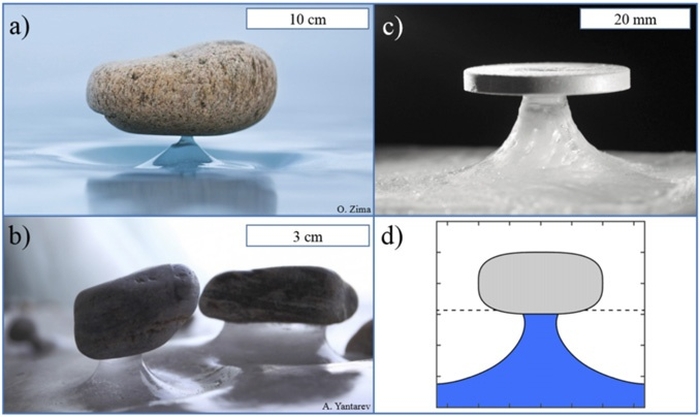Lake Baikal in Siberia has some amazing natural objects. There are thin pillars of ice in the lake and the rocks manage to balance on them. These are called Zen stones. These stones block the sunlight from melting the entire ice. Hence, a delicate film of ice is left around the stone on which it rests. Also, the far-infrared black-body irradiance of the stone creates the shallow depression around the base of the pillar.
“Zen stones are fascinating natural structures consisting of a stone standing on a slender ice pedestal, whose origin had long been misunderstood,” physicists Nicolas Taberlet and Nicolas Plihon of the French National Centre for Scientific Research in France explain in their new study.

“We demonstrate that they are caused by a variation in the sublimation rate of the surrounding ice, which leads to the slow formation of a pedestal, adding to the very few reports of sublimation-driven pattern formation. Understanding this process sheds light on other differential ablation processes encountered on ice surfaces, such as debris-covered glaciers, whose existence is threatened by global warming, and icy bodies in space.”
The researchers have managed to recreate the mechanism by using a vacuum chamber in the laboratory. A disk of aluminum was placed on a block of ice, which then sublimated under infrared black-body radiation from the walls of the chamber. When the disk wasn’t used, the ice melted uniformly. However, when the disk was placed, a pedestal was formed beneath it. Nature takes several weeks for the process.
Taberlet and Plihon were able to exhibit that the shapes of the rocks are made by far-infrared black-body radiation emitted by the stone itself, which emits in the temperature range of -20 to 0 degrees Celsius.

“While the umbrella effect is dominant regarding the overall dynamics of Zen stones, the far-infrared emitted by the stone is a necessary secondary effect, which creates the depression surrounding the pedestal,” they write in their paper. This phenomenon resembles glacier tables.”Glacier tables form because the rock may act as a thermal insulator, and therefore, their thermal properties (conductivity and specific heat) are crucial. The conclusion is exactly opposite for Zen stones as demonstrated by our experiments,” the researchers explain.
The research has been published in PNAS.


